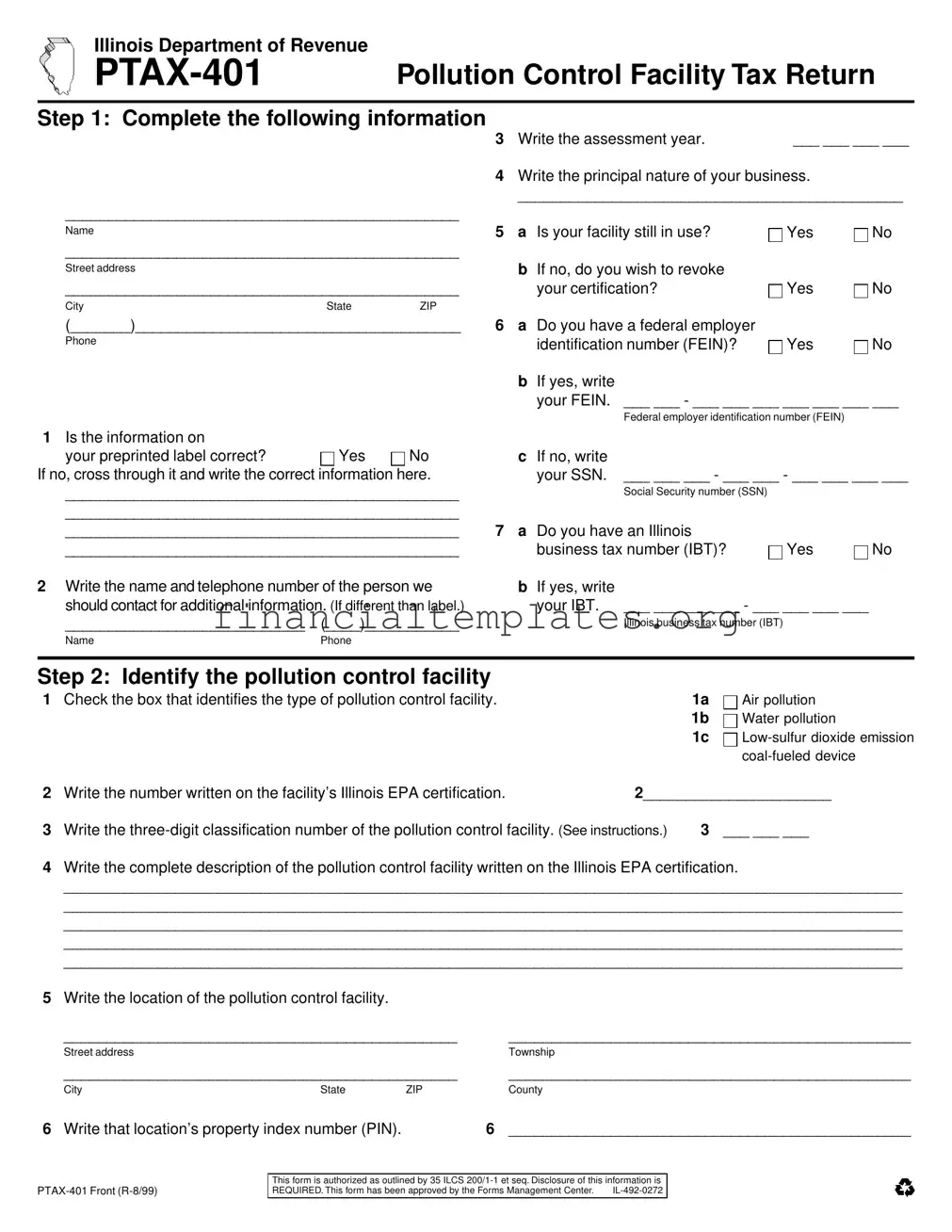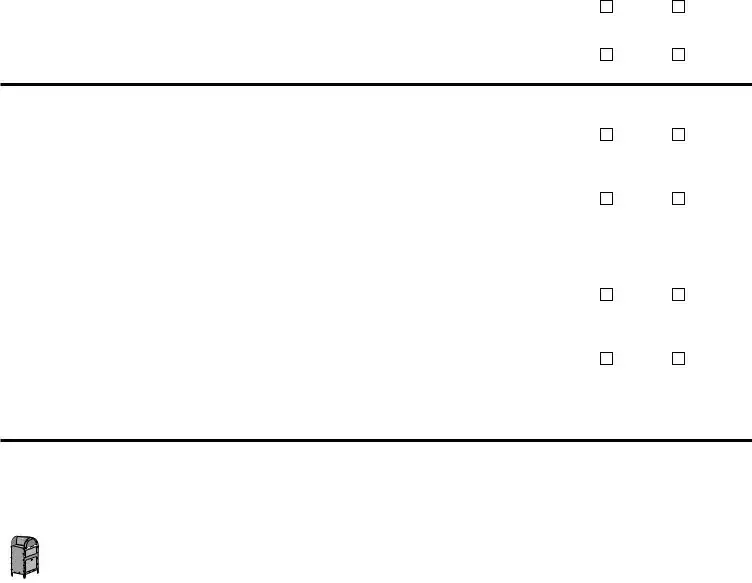The PTAX-401 form, associated with the Illinois Department of Revenue, shares similarities with numerous other tax documents designed to capture specific facets of business and property-related activities. First, consider the IRS Schedule C form, which is utilized by sole proprietors to report income or loss from a business. Similar to the PTAX-401, the Schedule C asks for detailed business information, including the principal business activity, gross income, and expenses. Both forms require the business owner's FEIN or SSN, underscoring the need for taxpayer identification in tracking and managing financial operations tied to tax obligations.
Another document bearing resemblance is the Form 4562, used for depreciation and amortization. This form, like the PTAX-401, requires detailed information about property and equipment, including the cost, date of service, and usage purpose. Businesses use Form 4562 to report on the depreciation of assets, an area that overlaps with the PTAX-401’s focus on pollution control facilities' operational costs and depreciation rates.
The IRS Form 8824, pertaining to Liked-Kind Exchanges, also shares common ground with the PTAX-401. Form 8824 is used when a taxpayer exchanges property used in a trade or business for another property of like kind. This exchange necessitates detailed reporting on the nature of the property, similar to how the PTAX-401 mandates descriptions of pollution control facilities and their usage. Both forms emphasize the importance of detailed asset descriptions in the context of tax reporting.
Form 4797, Sale of Business Property, is another document with similarities to the PTAX-401. This form is necessary for reporting the sale or exchange of property used in a business, much like the PTAX-401 requires specifics about the installation, operational status, and financial implications of pollution control facilities. Both forms delve into the financial ramifications of asset status changes, highlighting gains or losses that impact tax calculations.
The EPA's Toxic Release Inventory (TRI) Form R serves a different but complementary purpose to the PTAX-401. While the TRI Form R focuses on the environmental reporting of toxic chemical releases, the PTAX-401 addresses the taxation aspects of facilities controlling such pollution. Both forms necessitate detailed information about the business and its operations, tying financial implications to environmental stewardship.
Finally, a counterpart at the state level, the Illinois Business Income Tax Return (Form IL-1120), aligns with the PTAX-401 in its aim to gather business financials within Illinois. While the IL-1120 captures broader income, deductions, and tax credits, the PTAX-401 zeroes in on the specifics regarding pollution control facilities, illustrating a targeted approach within the larger framework of state tax obligations. Both forms play critical roles in fulfilling fiscal responsibilities, tailored to specific aspects of business operations.


